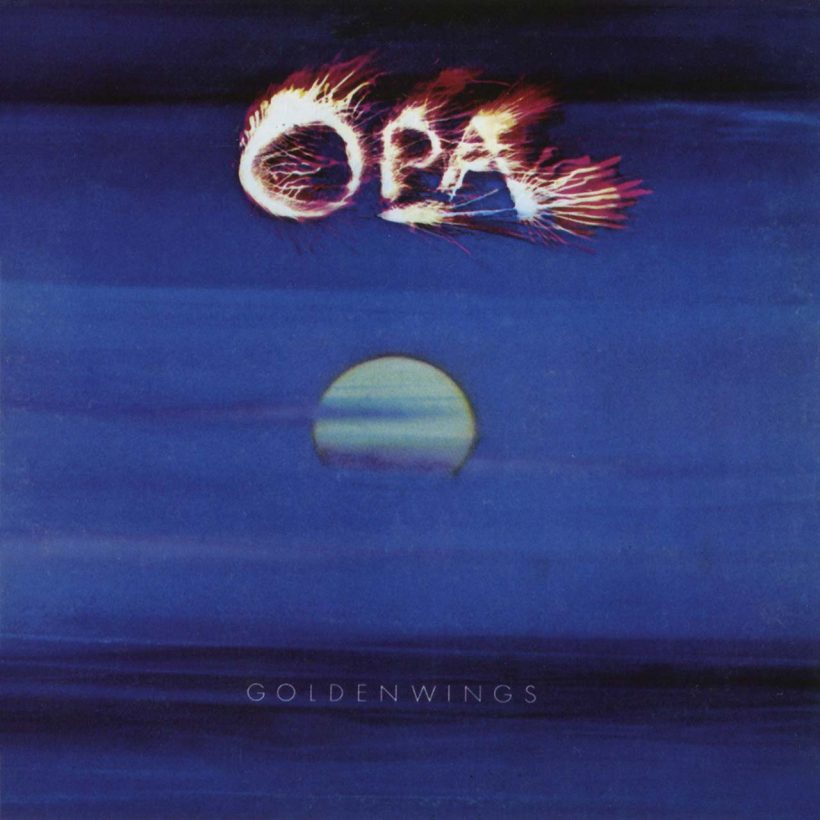‘Goldenwings’: How South American Jazz-Funkateers Opa Got Off The Ground
Fusion aficionados consider the Uruguayan trio’s 1976 debut album a cult classic.

The 1970s witnessed bold experimentation in the jazz world, where groundbreaking musicians like Miles Davis and his acolytes John McLaughlin, Herbie Hancock, and Chick Corea, jettisoned bebop for a more progressive style of music that fused electric jazz with rock and funk elements. Though fusion, as it became known, offended hardline jazz purists, it attracted a young, hungry audience and put jazz back in the upper echelons of the album charts. One of the unlikeliest and most surprising fusion bands was a Uruguayan trio called Opa, whose 1976 debut album Goldenwings, marked the high point of their all-too-short career.
The masterminds behind Opa – whose name is Uruguayan slang for “Hi” – were keyboardist/singer Hugo Fatturuso, and his brother Osvaldo, a drummer, both from Montevideo. They had tasted fame in South America as the co-founders of Los Shakers, a mop-topped Latino equivalent of The Beatles, who sold thousands of records across the continent as well as causing wild teen hysteria with their faux Merseybeat sound.
Order Opa’s Goldenwings on vinyl now.
After Los Shakers dissolved in 1969, the Fatturuso brothers moved to the US, where, bitten by the fusion bug, they radically changed their musical direction and recruited bassist Hugo “Ringo” Thielmann to form Opa in the early 70s. Injecting a distinctive Latin sensibility into their fusion palette, the band appeared on the radar of producer Larry Rosen (the “R” in GRP Records) in 1975 after he heard them perform in a club. Impressed by what he heard, Rosen funded recording sessions which resulted in nine tracks. Though recorded on a basic four-track tape machine and intended as a demo, Rosen was sufficiently excited by the band’s music to consider releasing the recordings as Opa’s debut album. But for unknown reasons, Rosen’s ardor cooled and the project was canned, leading Opa to lick their wounds and move on. (The album was eventually released in 1996 as Back Home).
Though disappointed by losing Rosen’s interest, in 1976 Opa signed a deal with jazz producer Orrin Keepnews’ Milestone label, then home to Brazilian singer Flora Purim, as well as heavyweight American jazz musicians such as saxophonist Joe Henderson and pianist McCoy Tyner.
Keepnews put Opa in the studio with Purim’s husband, percussion maestro Airto Moreira, who had arrived in the US from his native Brazil in 1967 and quickly made a name for himself by appearing on albums by Miles Davis, Return To Forever, and Cannonball Adderley before launching a successful solo career. Airto probably persuaded Keepnews to sign the band having featured them on Fingers, his 1973 album for CTI Records, which also included cameos from noted Brazilian flutist Hermeto Pascoal and guitarist David Amaro, who both contributed to Goldenwings.
A showcase for Opa’s bi-continental fusion aesthetic, where spacey synths were underpinned by lush Fender Rhodes textures and percussion rhythms that drew on a style of Afro-Uruguayan music called Candombe, Goldenwings resurrected three of the tracks from their demo recording: The title track, with its horn-like synth motif over a bubbling fusion groove; a pulsating cover of Uruguayan percussionist Ruben Rada’s “African Bird”; and “Corre Niña,” an exhilarating samba-esque piece with soaring vocals. (The track was covered by Flora Purim on her 1978 album Nothing Will Be As It Was … Tomorrow).
Other highlights included “Butterflies,” a bucolic soundscape distinguished by Hermeto Pascoal’s mellifluous flute and some distinctly Beatles-esque harmony vocals, reviving memories of Los Shakers. In sharp contrast, the propulsive closer “Groove” reverberated with echoes of Herbie Hancock’s iconic funk band, The Headhunters.
Although Goldenwings wasn’t a huge commercial success, Milestone’s faith in the group resulted in a second Airto-produced LP, 1977’s Magic Time, but sadly, that proved to be the band’s swansong before they faded into obscurity.
Now considered a cult classic, Goldenwings remains the go-to entry in Opa’s brief discography. As maiden flights went, it proved an impressive debut, showcasing a compelling Latin fusion style that in recent times has inspired hip-hop producers like Madlib and Captain Murphy – an alias of Flying Lotus – to keep the band’s memory alive by sampling tracks from Opa’s back catalog.












